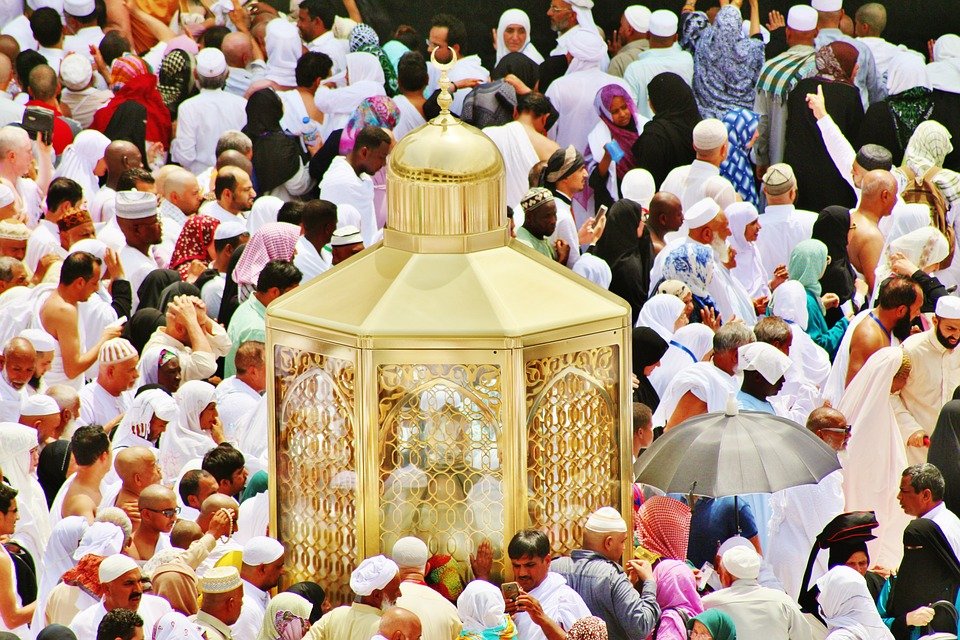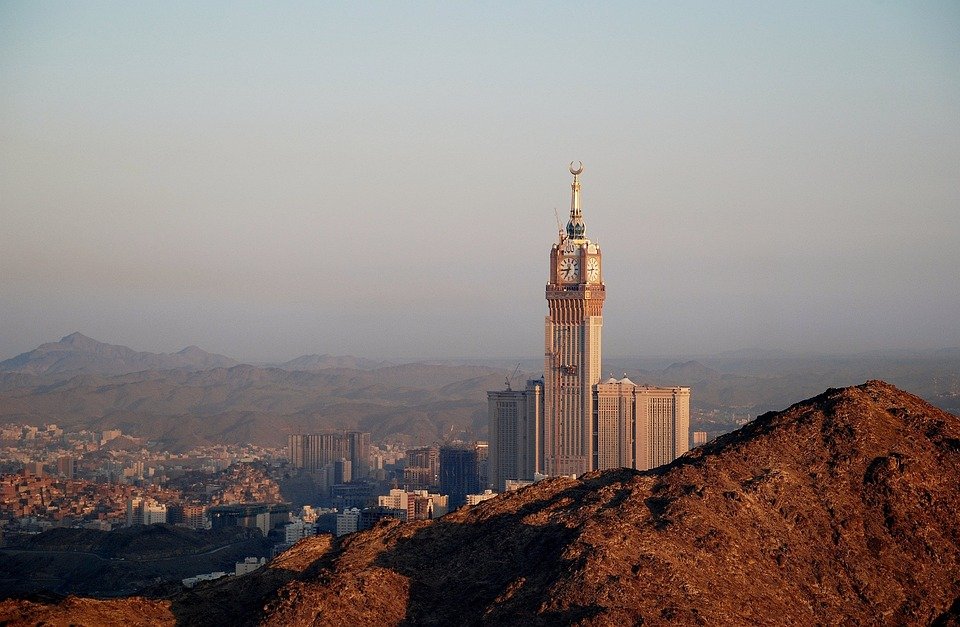You are here to read: How Does Hajj Connect to Sacred Texts: Exploring Deep Links – A Thoughtfully Written Guide Offering Spiritual Wisdom and Travel Advice for Every Pilgrim who is going on holy journey of Hajj or Umrah.
In this article, we will explore how does Hajj connect to sacred texts, shedding light on its profound significance in Islam. The Hajj pilgrimage, an essential pillar of faith, intertwines deeply with various sacred writings, particularly the Quran and Hadith. By examining these texts, I aim to show how they guide and inspire millions of Muslims worldwide. This article serves as a comprehensive guide for anyone seeking to understand the spiritual dimensions of Hajj. I promise you will find valuable insights into how does Hajj connect to sacred texts that enrich your knowledge.
Understanding how does Hajj connect to sacred texts holds great importance in grasping the full essence of this pilgrimage. I believe that the teachings and narratives found in these texts shape the experience of millions during this sacred time. We have dedicated ourselves to providing accurate and insightful information on “How Does Hajj Connect to Sacred Texts: Exploring Deep Links.” With nine years of experience in the Umrah and Makkah travel field since 2016, we feel equipped to share our expertise with you. Join us as we reflect on the vital role that sacred texts play in the lives of those who undertake the journey of Hajj.
Understanding Hajj and Its Significance
Hajj is one of the most important events for Muslims all over the world. This pilgrimage to Makkah occurs every year during the Islamic month of Dhul-Hijjah. Each able-bodied Muslim who can afford to participate is required to make this pilgrimage at least once in their lifetime. Hajj is more than just a trip; it is a way to feel closer to Allah and deepen one’s faith. Many people find immense joy, peace, and a sense of belonging during this holy time. This is a time for prayer, reflection, and seeking forgiveness.
The rituals performed during Hajj are rich in meaning and deeply rooted in tradition. From circling the Kaaba to standing on the plains of Arafat, each practice tells a story of devotion and spirituality. These acts aim to cleanse the soul and bring Muslims together in a spirit of unity. I think that this collective experience creates a powerful bond among participants, who often form friendships that last a lifetime. With millions gathering in one place, the atmosphere is vibrant and filled with goodwill, truly making it a remarkable event.
The Sacred Texts Behind Hajj
The significance of Hajj ties back to several sacred texts in Islam, particularly the Quran and Hadith. The Quran mentions Hajj explicitly, emphasizing its importance as a command from Allah. Surah Al-Baqarah (Chapter 2, Verse 196) states, “And complete the Hajj and Umrah for Allah.” These verses guide Muslims in their understanding of the pilgrimage’s sanctity and the spiritual benefits it provides. When we read these words, they resonate with a sense of obligation and devotion.
Moreover, the Hadith literature contains numerous accounts describing the practices of Hajj as prescribed by the Prophet Muhammad (peace be upon him). These texts elaborate on each rite and its significance. I feel that these teachings offer critical insights into how to conduct oneself during this spiritual endeavor. By following the Hadith, pilgrims not only fulfill their religious duties but also embody the values of humility, perseverance, and community.
Rituals and Their Textual Foundations
Many rituals performed during Hajj derive their meaning from sacred texts. One prominent ritual is Tawaf, where pilgrims circle the Kaaba seven times. This act symbolizes the devotion to Allah, as described in various Hadiths. When performing Tawaf, we not only participate in a physical act but also express our spiritual longing. It’s almost as if we can feel the centuries of prayers and hopes that have filled the space around the Kaaba.
You're at the middle of this awesome post at AirlinkHajjandUmrah.com through: How Does Hajj Connect to Sacred Texts: Exploring Deep Links. Keep reading, it gets better!
Another vital ritual is standing at Arafat, known as the “Day of Arafat.” This day is considered the pinnacle of Hajj and is heavily referenced in Islamic texts. The day is filled with prayer and repentance, serving as a moment of reflection. I think many pilgrims feel a profound sense of closeness to Allah during this time. The teachings stress the importance of earnest supplication and seeking forgiveness, making it a transformative experience for many.
The Role of Prophetic Traditions
The Hadith plays a vital role in guiding the rituals of Hajj, educating us about how to perform them properly. The Prophet Muhammad’s experiences and teachings provide a framework for modern-day pilgrims. These traditions emphasize not just the acts but also the intention behind each rite. I have seen how people approach these moments with sincerity and dedication, supported by the teachings of their faith. It highlights that Hajj is about both action and mindset.
In Islam, following the prophetic model in all aspects of life is fundamental. This adherence instills a sense of discipline and respect for the rituals. When we perform Hajj according to the Hadith, we align ourselves with the practices of those who came before us. This continuity fosters a sense of belonging to a rich tradition that connects Muslims across generations and locations. I believe this shared experience makes the pilgrimage even more significant and meaningful.
The Power of Prayer in Hajj
At the heart of Hajj lies the power of prayer, deeply emphasized in sacred texts. During the pilgrimage, prayers take on special significance. Muslims around the world recall the call to prayer (adhan) and respond by communing with Allah through supplications. The Quran encourages believers to pray fervently, stressing that Allah’s mercy is vast. Many pilgrims find that during Hajj, their prayers feel more potent. This is a time when individuals ask for guidance, forgiveness, and strength.
The act of praying at different locations during Hajj, such as the Kaaba, Arafat, and Muzdalifah, further intensifies this spiritual experience. Each site holds its unique meaning and importance, leading to different reflections and requests in our hearts. I think this amalgamation of prayer makes Hajj a deeply personal experience for everyone involved. When we approach our faith wholeheartedly, we often leave feeling rejuvenated, hopeful, and enriched.
Unity Through Diversity
Hajj unites Muslims from diverse backgrounds, proving that faith transcends cultural barriers. The pilgrimage draws people from every corner of the globe, showcasing a vibrant tapestry of languages, traditions, and styles. I often reflect on how standing shoulder-to-shoulder with others in prayer reinforces our shared beliefs. Sacred texts emphasize unity, illustrating that we are all part of a larger community, regardless of where we come from.
The experience of Hajj reminds us that, while we may differ in many ways, our devotion binds us together. Many pilgrims express that feeling a bond with others enhances their experience, creating a sense of belonging. Sharing moments of prayer, joy, and even hardship fosters a unique camaraderie. I believe this atmosphere of unity amplifies the spiritual dimensions of Hajj, reinforcing the teachings of love and mutual respect found in sacred texts.
Reflecting on the Journey Beyond Hajj
After completing Hajj, many pilgrims feel a transformation within themselves. This experience often compels them to reflect on their lives and their relationship with Allah. The lessons learned and the emotions felt during the pilgrimage continue to resonate long after returning home. Sacred texts encourage believers to remain steadfast in their faith and uphold the principles learned during Hajj.
As people return to their daily lives, they carry with them the memories and insights gained during this sacred time. I have seen how individuals strive to embody the spirit of Hajj daily, committing to kindness, humility, and sincerity. This pilgrimage is an invitation not just to experience spirituality but to integrate those lessons into everyday life. By living out these teachings, we keep the essence of Hajj alive, continually connecting with divine wisdom.
That wraps up How Does Hajj Connect to Sacred Texts: Exploring Deep Links. Thanks for sticking with us till here! Share this: How Does Hajj Connect to Sacred Texts: Exploring Deep Links with your friends.
Check our homepage at Air Link Hajj & Umrah for more awesome updates.
Some interesting posts are: 1: Umrah Mubarak, 2: When is Umrah closed 2026?, 3: When does Umrah start after Hajj 2026?
Mushu, an experienced Saudi Arabia traveler and writer, shares insightful tips and spiritual reflections to enhance Hajj and Umrah journeys for fellow pilgrims. He has been to Makkah and Madina from 2016 to 2023 many times and his posts will reflect this.







